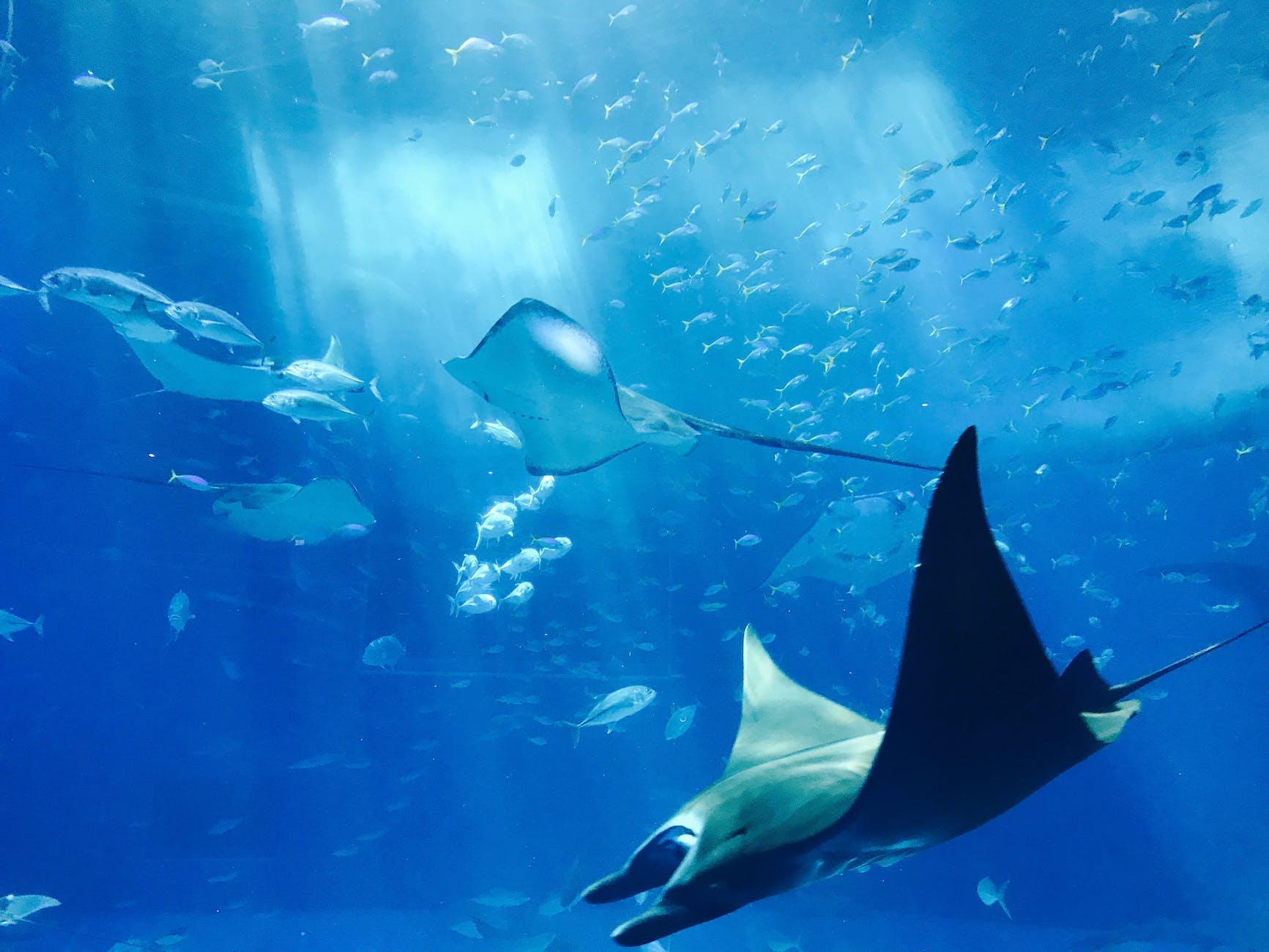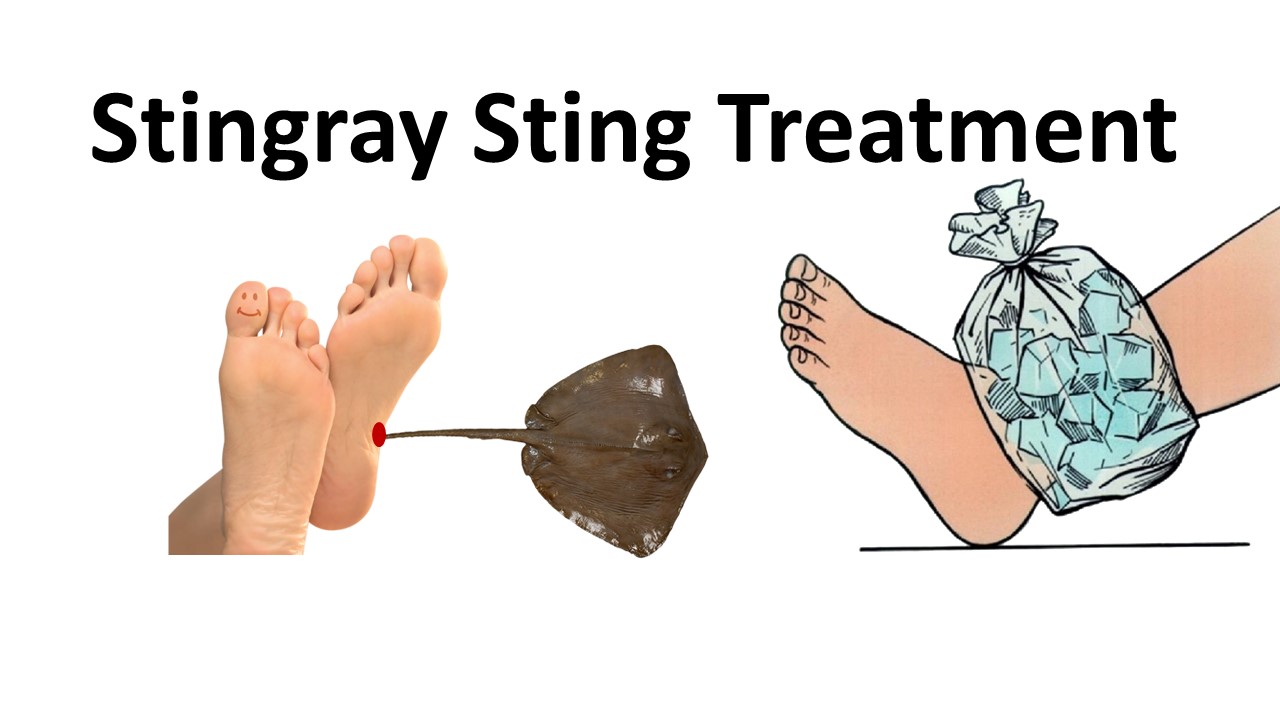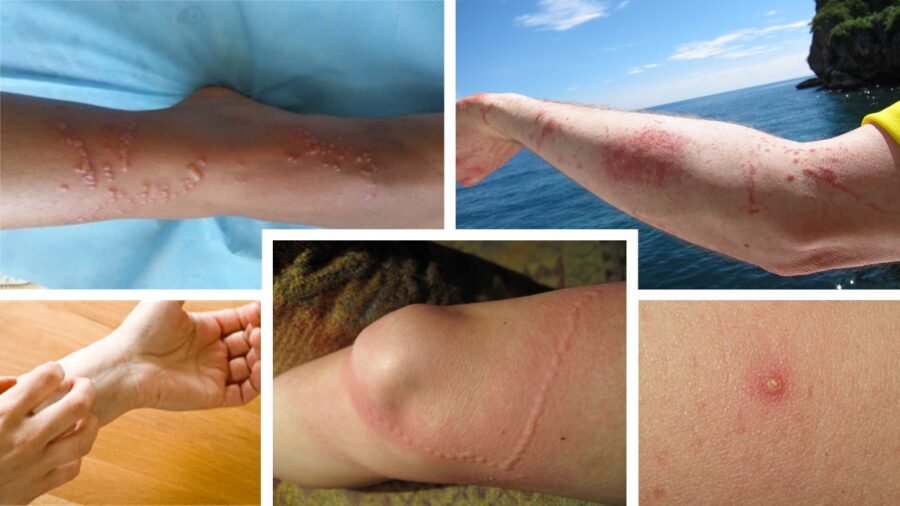Stingray Sting Swollen After A Week – Urgent Relief And What You Need To Know
Have you found yourself searching frantically for answers to the baffling question, “Stingray Sting Swollen After A Week”? Don’t worry; you’re not alone. Dealing with a persistently swollen stingray sting can be both alarming and uncomfortable.
When faced with a stingray sting that remains swollen even after a week, it’s natural to experience a sense of unease. What if it’s a sign of a severe complication? What if there’s an underlying infection wreaking havoc within? Don’t let fear consume you.
In this article, we will delve into the possible causes behind this lingering swelling, uncover the potential risks involved, and provide you with valuable insights on how to manage and treat this unsettling situation. So, brace yourself as we unveil the truth about stingray stings and equip you with the knowledge to take control of your recovery.
Stingray Sting Swollen After A Week
So, your stingray sting swollen after a week? The swelling of a stingray sting that persists for a week can be attributed to various factors.
While it is typical for the initial swelling to subside within a few days, there are instances where the swelling lingers longer than expected. Understanding why a stingray sting may remain swollen after a week can help shed light on the underlying causes.
When a stingray sting remains swollen after a week, it can be indicative of several factors. Here are some potential reasons why a stingray sting may still be swollen after a week:
1. Infection
One of the primary reasons for prolonged swelling is an infection. The stingray’s barb can introduce bacteria or other microorganisms into the wound, leading to an infected sting. If the infection persists or worsens, it can cause continued swelling, redness, warmth, and discharge of pus.
2. Retained Foreign Body
Sometimes, fragments of the stingray’s barb or other foreign objects can remain embedded in the wound. These foreign bodies can cause irritation and inflammation, leading to prolonged swelling. Surgical removal of the foreign body may be necessary to resolve the swelling.
3. Delayed Allergic Reaction
Some individuals may have a delayed allergic reaction to the venom injected by the stingray. While initial symptoms may be mild, such as localized swelling, redness, and itching, the allergic response can progress over time, resulting in prolonged swelling.
4. Allergic Dermatitis
In addition to venom-related allergies, the chemicals present on a stingray’s body may cause contact dermatitis in some people. This allergic reaction can lead to persistent swelling, itching, and inflammation.
5. Poor Wound Care
Inadequate or improper wound care can impede the healing process and contribute to persistent swelling. Failure to keep the wound clean, apply appropriate dressings, or follow medical advice can increase the risk of infection and inflammation.
6. Compromised Immune System
Individuals with weakened immune systems may experience delayed healing and prolonged swelling after a stingray sting. Conditions such as diabetes, immunodeficiency disorders, or certain medications can affect the body’s ability to combat infections and inflammation effectively.
7. Secondary Inflammation
Even after the initial inflammation subsides, the body’s immune response can lead to secondary inflammation. This prolonged immune reaction can cause ongoing swelling and discomfort.
It’s crucial to consult a healthcare professional if you experience prolonged swelling after a stingray sting. They can evaluate the situation, determine the underlying cause, and provide appropriate treatment, which may include antibiotics, wound cleaning, pain management, or removal of foreign bodies.
Proper medical guidance will help alleviate the swelling, prevent complications, and support the healing process.
READ ALSO: Do Water Shoes Protect From Jellyfish? Find Out Now!
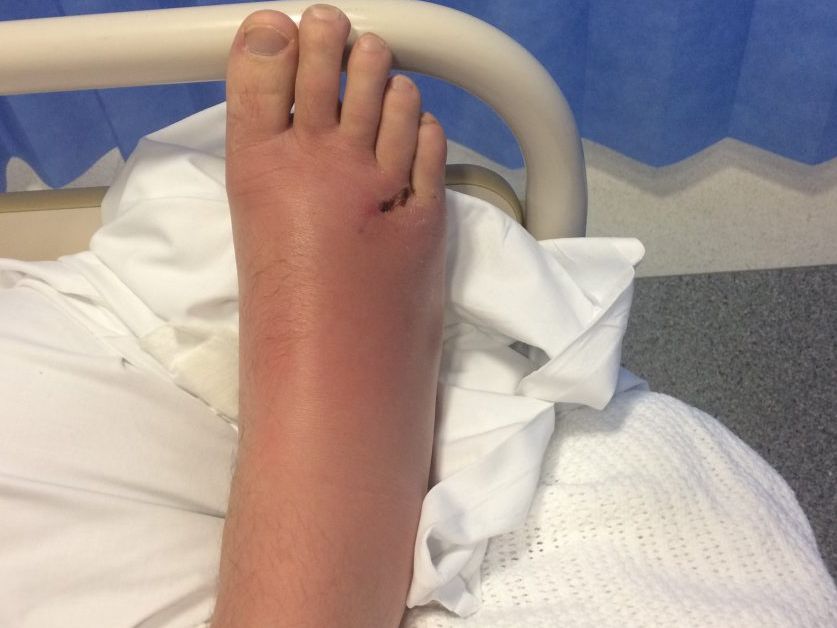
The Potential Risks Involved When Stingray Sting Swollen After A Week
When a stingray sting remains swollen after a week, it can indicate potential risks and complications. Here are some of the potential risks involved:
1. Infection
One of the primary risks associated with persistent swelling is the development of an infection. When a stingray stings, it introduces bacteria and other microorganisms into the wound.
If the wound becomes infected and the infection goes untreated, it can lead to more severe complications such as cellulitis or an abscess.
– Cellulitis: This is a bacterial infection of the skin and underlying tissues. It typically causes redness, warmth, swelling, and pain in the affected area. If the infection spreads, it can lead to fever, chills, and systemic symptoms.
– Abscess: If the infection progresses and forms a pocket of pus within the wound, an abscess can develop. Abscesses often require medical intervention, such as drainage and antibiotics, to prevent further complications and promote healing.
2. Allergic Reactions
Stingray venom contains substances that can trigger allergic reactions in some individuals. While immediate allergic reactions are more common, delayed allergic reactions can also occur.
Prolonged swelling after a week may indicate an ongoing or delayed allergic response that requires medical attention.
3. Scarring and Tissue Damage
Lingering swelling and inflammation can increase the risk of scarring and tissue damage. If the wound does not heal properly, it may leave a visible scar or result in tissue changes that can affect the functionality of the affected area.
4. Chronic Pain and Discomfort
Prolonged swelling can cause chronic pain and discomfort, affecting daily activities and quality of life. The persistent inflammation can lead to ongoing pain, tenderness, and reduced mobility, requiring appropriate pain management strategies.
5. Systemic Complications
In rare cases, a stingray sting that remains swollen after a week can result in systemic complications. If the infection spreads throughout the body, it can lead to bloodstream infections or sepsis, which can be life-threatening if left untreated.
6. Secondary Inflammation
Prolonged swelling can cause secondary inflammation in the surrounding tissues. This inflammation can disrupt normal tissue function, impair wound healing, and potentially lead to further complications.
A healthcare professional can assess the severity of your condition, identify any potential risks or complications, and provide appropriate treatment to mitigate further harm. Prompt medical intervention is important to manage these risks effectively and ensure a safe and successful recovery.
READ ALSO: What To Do If A Jellyfish Stings You? Essential Steps for Quick Relief
How To Manage And Treat Stingray Sting Swollen After A Week
Managing and treating a stingray sting that remains swollen after a week requires appropriate care and medical attention to avoid long-term effects. Here are some steps you can take:
1. Seek Medical Evaluation: If the swelling persists for a week or longer, it’s necessary to consult a healthcare professional. They can assess the severity of the swelling, evaluate for any signs of infection or complications, and provide appropriate treatment recommendations.
2. Wound Cleaning: Appropriate wound cleaning is key for preventing infection and promoting healing.
Follow any instructions provided by your healthcare professional, which may include gentle cleansing with mild soap and water or an antiseptic solution. Avoid scrubbing the wound to prevent further irritation.
3. Antibiotics: If there are signs of infection, such as increasing redness, warmth, or pus formation, your healthcare professional may prescribe oral or topical antibiotics to combat the infection. Follow the prescribed course of antibiotics as instructed.
4. Pain Management: Over-the-counter pain relievers, such as acetaminophen or ibuprofen, may help alleviate pain and reduce swelling. However, consult your healthcare professional before taking any medication to ensure it is safe and appropriate for your situation.
5. Wound Dressings: Depending on the severity of the swelling and the presence of any wounds, your healthcare professional may recommend specific wound dressings to promote healing and protect the affected area from further damage or contamination.
Follow their instructions regarding dress changes and proper wound care.
6. Elevation and Rest: Elevating the affected area can help reduce swelling by promoting better circulation and fluid drainage. Resting the affected area and avoiding excessive movement or pressure can also aid in reducing discomfort and allowing the healing process to progress.
7. Follow-up Care: It’s important to attend any scheduled follow-up appointments with your healthcare professional. They can assess the progress of your healing, make any necessary adjustments to the treatment plan, and address any concerns or complications that may arise.
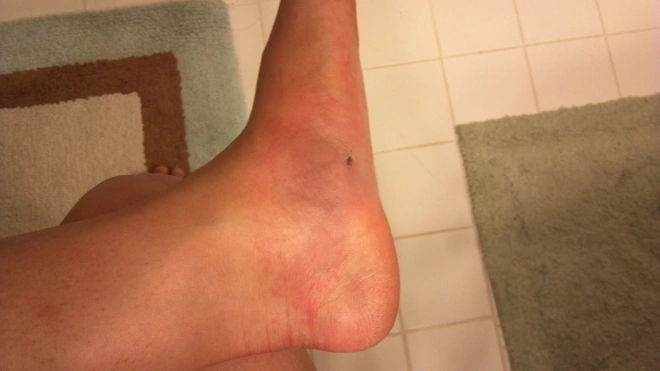
Tips On How To Reduce Stingray Sting Swelling
Reducing swelling after a stingray sting can help alleviate discomfort and promote healing. Here are some tips to help reduce swelling:
1. Apply Cold Compress: Immediately after the sting and cleaning, apply a cold compress or an ice pack wrapped in a thin cloth to the affected area. The cold temperature helps constrict blood vessels and reduce inflammation. Apply for 15-20 minutes at a time, with breaks in between, for the first 24-48 hours.
2. Keep the Area Elevated: Elevate the affected limb or area to promote better circulation and reduce swelling. Prop it up on pillows or cushions to elevate it above heart level whenever possible.
3. Take Over-the-Counter Anti-Inflammatory Medication: Nonsteroidal anti-inflammatory drugs (NSAIDs) such as ibuprofen or naproxen can help reduce swelling and relieve pain.
Follow the recommended dosage and consult with a healthcare professional if you have any underlying medical conditions or are taking other medications.
4. Avoid Excessive Movement: Minimize movements and activities that can worsen swelling or cause further irritation to the affected area. Resting and avoiding unnecessary strain can help reduce inflammation.
5. Compression: Consider using compression bandages or elastic wraps to apply gentle pressure to the swollen area. Compression can help reduce fluid buildup and promote better circulation. Ensure that the compression is not too tight, as it can restrict blood flow.
6. Stay Hydrated: Drinking plenty of water can help flush out toxins and promote overall tissue health, aiding in the reduction of swelling.
7. Avoid Heat and Alcohol: Heat and alcohol consumption can exacerbate swelling and increase inflammation. Avoid hot showers, saunas, or applying heat packs to the affected area. Limit or avoid alcohol consumption during the healing process.
8. Gentle Massage: Once the acute phase has passed, a gentle massage around the swollen area can help stimulate circulation and reduce swelling. Use light pressure and consult with a healthcare professional before attempting massage to ensure it’s safe and appropriate for your specific condition.
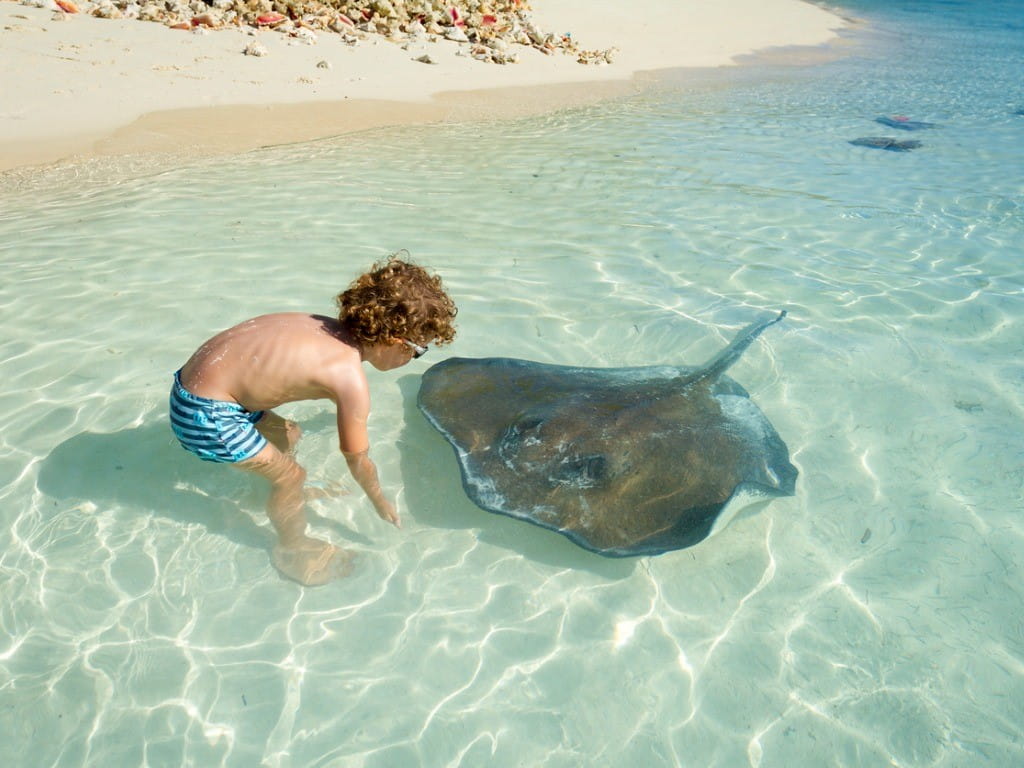
How To Prevent Stingray Stings (Stingray Sting Swollen After A Week)
Preventing stingray stings is crucial for your safety while enjoying marine environments. Here are some tips to help you avoid stingray stings:
1. Shuffle Your Feet: When wading in shallow waters, especially where stingrays are known to be present, shuffle your feet along the sandy bottom. This movement sends vibrations that warn stingrays of your approach, giving them a chance to swim away.
2. Avoid Touching Stingrays: Stingrays are generally docile creatures, but they have a natural defense mechanism. Avoid touching or stepping on them, as they may feel threatened and respond defensively.
3. Wear Protective Footwear: If you plan to walk in areas where stingrays might be present, consider wearing protective footwear like water shoes or sandals. This can provide an extra layer of protection against accidental stings.
4. Follow Local Warnings and Signs: Pay attention to warning signs posted at beaches or coastal areas. Local authorities often put up signs to alert visitors about potential stingray sightings or areas with a higher likelihood of stingray encounters.
5. Stay Clear of Stingray Nesting Areas: During certain times of the year, stingrays may gather in specific areas for mating or nesting. Avoid these locations to reduce the chances of encountering stingrays.
6. Snorkel and Swim Mindfully: When snorkeling or swimming in stingray habitats, remain aware of your surroundings and avoid sudden movements. Stingrays can be difficult to spot when resting on the ocean floor, so be cautious as you explore.
7. Stay Informed and Educated: Learn about the behavior and habits of stingrays in the area you plan to visit. Being informed will help you make better decisions and stay safe during your time in the water.
8. Respect Wildlife: Remember that you are a guest in the marine environment, and it’s essential to respect the creatures that inhabit it. Keep a safe distance from marine life and avoid disturbing their natural behavior.
How Long Should A Stingray Sting Stay Swollen? (Stingray Sting Swollen After A Week)
The duration of swelling caused by a stingray sting can vary from person to person. In general, mild to moderate swelling after a stingray sting can last for a few days up to a week.
However, individual factors such as the severity of the sting, individual immune response, and the presence of any complications can influence the duration of swelling.
Swelling that persists beyond a week or shows signs of worsening may indicate an underlying issue such as infection or an allergic reaction. If the swelling becomes increasingly painful, red, or shows signs of pus or spreading inflammation, it is recommended to seek medical attention promptly.
RELATED: 10 Best Webbed Swimming Gloves For Everyone
Why Is My Stingray Sting Not Healing? (Stingray Sting Swollen After A Week)
If your stingray sting is not healing as expected, there could be several reasons behind the delayed healing process. Here are some possible explanations:
1. Infection
One of the most common reasons for delayed healing is an infection. Stingray stings can introduce bacteria or other microorganisms into the wound, leading to an infection that hinders the healing process.
Signs of infection may include increasing redness, warmth, tenderness, pus, or spreading inflammation. If you suspect an infection, it is important to seek medical attention for proper evaluation and treatment.
2. Allergic Reaction
Some individuals may experience delayed or prolonged allergic reactions to the venom injected by the stingray. Allergic reactions can cause inflammation and impair the healing process.
If you notice ongoing swelling, itching, or other signs of an allergic reaction, it is advisable to consult with a healthcare professional.
3. Wound Depth or Severity
The depth and severity of the stingray sting can influence the healing timeline. Deeper or more severe wounds may take longer to heal compared to superficial ones. Additionally, if the stingray’s barb has caused significant tissue damage, it may require a longer healing period.
4. Poor Wound Care
Proper wound care is essential for optimal healing. Inadequate cleaning, dress changes, or failure to follow medical advice can impede the healing process. Ensure you are following the recommended wound care instructions provided by your healthcare professional.
5. Underlying Health Conditions
Certain underlying health conditions, such as diabetes or compromised immune function, can affect the body’s ability to heal wounds efficiently. If you have any pre-existing medical conditions, it is important to inform your healthcare professional, as it may impact the healing process.
6. Foreign Object Retention
Sometimes, fragments of the stingray’s barb or other foreign objects can remain embedded in the wound. These foreign bodies can impede healing and cause ongoing irritation and inflammation. Medical intervention may be necessary to remove foreign objects.
READ ALSO: What Are The Best Water Shoes For The Beach
Why Is My Stingray Sting Itchy (Stingray Sting Swollen After A Week)
If you are experiencing itchiness after a stingray sting, it could be due to various factors. Here are some possible reasons for the itchiness:
1. Allergic Reaction: Itching is a common symptom of an allergic reaction to a stingray sting. The venom injected by the stingray can trigger an immune response in some individuals, leading to itching, redness, and other allergic symptoms. Allergic reactions can occur immediately or even after a delayed period.
2. Inflammation: The body’s natural inflammatory response to the stingray sting can cause itchiness as a result of histamine release. Inflammation stimulates nerve endings, leading to itchiness in the affected area.
3. Healing Process: Itchiness can also be a part of the normal healing process. As the stingray sting starts to heal, itchiness may occur as new tissues develop and nerve endings regenerate. Itchiness is often a sign of the body’s healing response.
4. Dryness or Irritation: The skin around the stingray sting may become dry or irritated, leading to itchiness. This can occur due to factors such as frequent cleaning, certain topical treatments, or environmental factors like exposure to sun or saltwater.
It is important to note that severe or worsening itchiness, along with other concerning symptoms, may indicate an infection or an allergic reaction.
If you experience excessive itchiness, increasing redness, swelling, or pus formation, it is recommended to seek medical attention for accurate evaluation and treatment.
To help alleviate itchiness after a stingray sting, you can try the following:
– Keep the area clean and dry.
– Apply a soothing, over-the-counter anti-itch cream or calamine lotion to the affected area.
– Take an antihistamine medication (oral or topical) to help reduce itching and alleviate allergic symptoms.
– Avoid scratching the itchy area, as it can lead to more irritation and potential infection.
If the itchiness persists or becomes bothersome, consult with a healthcare professional for appropriate assessment and guidance on managing the symptoms effectively.
CHECK THIS TOO: Do Water Shoes Protect Against Sea Urchins
Nerve Damage From Stingray Sting (Stingray Sting Swollen After A Week)
Nerve damage from a stingray sting is a rare but possible complication. The stingray’s barb can pierce the skin and damage nerves, which can lead to numbness, tingling, weakness, and pain in the affected area.
The severity of the nerve damage depends on the location of the sting and the amount of force used by the stingray.
In some cases, the nerve damage may be temporary and the symptoms will go away on their own within a few weeks or months.
However, in other cases, the nerve damage may be permanent. If you experience any numbness, tingling, weakness, or pain after being stung by a stingray, it is important to see a doctor to get a diagnosis and treatment plan.
Here are some of the symptoms of nerve damage from a stingray sting:
- Numbness
- Tingling
- Weakness
- Pain
- Burning sensation
- Difficulty moving the affected area.
If you experience any of these symptoms, it is important to see a doctor right away. The doctor will examine the affected area and may order tests, such as an electromyography (EMG) or nerve conduction velocity (NCV) test, to confirm the diagnosis.
There is no specific treatment for nerve damage from a stingray sting. However, the doctor may recommend pain medication, physical therapy, or other treatments to help manage the symptoms. In some cases, surgery may be required to repair the broken nerve.
The prognosis for nerve damage from a stingray sting depends on the severity of the damage. In most cases, the symptoms will improve over time, but some people may experience permanent damage.
Stingray Sting Myths and Facts
Myth 1: Stingrays are naturally aggressive and attack humans
Fact: Stingrays are generally not aggressive towards humans. They sting in self-defense when they feel threatened or stepped on accidentally.
Myth 2: Stingrays always attack by stinging their prey
Fact: Stingrays primarily use their stingers for defense, not hunting. They typically feed on small fish and crustaceans by crushing them with their powerful jaws.
Myth 3: Stingrays are poisonous
Fact: Stingrays are not poisonous, but they have a sharp, serrated stinger near their tail. It’s this stinger that can cause injury and pain if it pierces the skin.
Myth 4: Stingray stings are always deadly
Fact: While stingray stings can be painful and even cause serious injuries, they are rarely fatal. Most stingray injuries are treatable with proper medical care.
Myth 5: Peeing on a stingray sting will help relieve the pain
Fact: Urinating on a stingray sting is not an effective treatment. Instead, rinsing the wound with hot water (as hot as can be tolerated) can help alleviate pain by breaking down the venom’s proteins.
Myth 6: Stingray venom is extremely potent
Fact: While stingray venom can be painful, it is not as potent as some other venoms found in marine animals like certain jellyfish or stonefish.
Myth 7: All stingray species have the same level of danger
Fact: Different species of stingrays vary in size and behavior. While most stingrays are not aggressive, some larger species, like the giant freshwater stingray, can pose a greater threat.
Myth 8: Wearing water shoes or sandals will always protect you from stingray stings
Fact: While wearing protective footwear can reduce the risk of stepping on a stingray, it is not foolproof. Stingrays may still be able to sting through thin materials, so it’s important to shuffle your feet when walking in areas where stingrays may be present.
Myth 9: Stingray stings always require immediate medical attention
Fact: While it’s essential to seek medical attention for stingray stings, not all cases are life-threatening. Minor stings can often be treated with first aid measures, but it’s crucial to assess the severity of the injury.
FAQs
What Is A Stingray Sting?
A stingray sting occurs when a stingray’s sharp, serrated stinger punctures a person’s skin. This can happen if someone steps on or accidentally touches a stingray.
What Are The Symptoms Of A Stingray Sting?
Symptoms of a stingray sting may include immediate, intense pain, swelling, redness, bleeding, and sometimes nausea, vomiting, or weakness.
Are All Stingray Stings Dangerous?
While stingray stings can be painful and potentially serious, they are not always dangerous. The severity of a stingray sting depends on factors like the location of the injury and the individual’s overall health.
What Should I Do If I’m Stung By A Stingray?
If stung, rinse the wound with hot water (as hot as can be tolerated) to help alleviate pain. Seek medical attention as soon as possible for wound assessment and proper treatment.
Can I Treat A Stingray Sting At Home?
Minor stingray stings can be treated at home with hot water immersion and over-the-counter pain relievers. However, it’s essential to consult a healthcare professional for any stingray sting to assess the wound and the need for further treatment.
Is It True That Urinating On A Stingray Sting Can Help?
No, urinating on a stingray sting is not an effective treatment. Hot water immersion is a better method to relieve pain and break down the venom’s proteins.
Can A Stingray Sting Be Poisonous Or Deadly?
Stingray stings are not typically poisonous, and fatalities are rare. However, complications such as infections or severe allergic reactions can occur, so seeking prompt medical attention is crucial.
How Can I Prevent Getting Stung By A Stingray?
To prevent stingray stings, shuffle your feet when wading in shallow waters to alert stingrays of your presence. Wearing protective footwear, like water shoes, can also reduce the risk.
Are All Stingrays The Same, Or Are There Variations In Danger Levels?
Different species of stingrays vary in size and behavior. While most are not aggressive, some larger species can pose a greater threat. It’s essential to exercise caution and respect all stingrays in their natural habitat.
Are There Any Long-Term Effects Of A Stingray Sting?
Most stingray stings do not result in long-term effects when treated promptly and properly. However, severe injuries or infections can lead to complications, so it’s essential to follow up with medical care.
Are Stingrays Endangered Or Protected Species?
Some stingray species are endangered or protected due to habitat loss and overfishing. Conservation efforts are in place to protect these creatures and their ecosystems.
Can You Safely Interact With Stingrays In Controlled Environments?
Yes, in many locations, there are opportunities to interact with stingrays safely, such as Stingray City in the Cayman Islands. These experiences are usually well-managed to ensure both human and stingray safety.
The Bottom Line On Stingray Sting Swollen After A Week
If you’re experiencing a stingray sting swollen after a week, it’s important to act fast. Delayed swelling can be a sign of potential complications such as infection or allergic reactions.
Don’t hesitate to seek medical attention to assess the situation and receive appropriate treatment. Remember, your well-being and health should always be the top priority. Act now to ensure a speedy recovery from your stingray sting.
